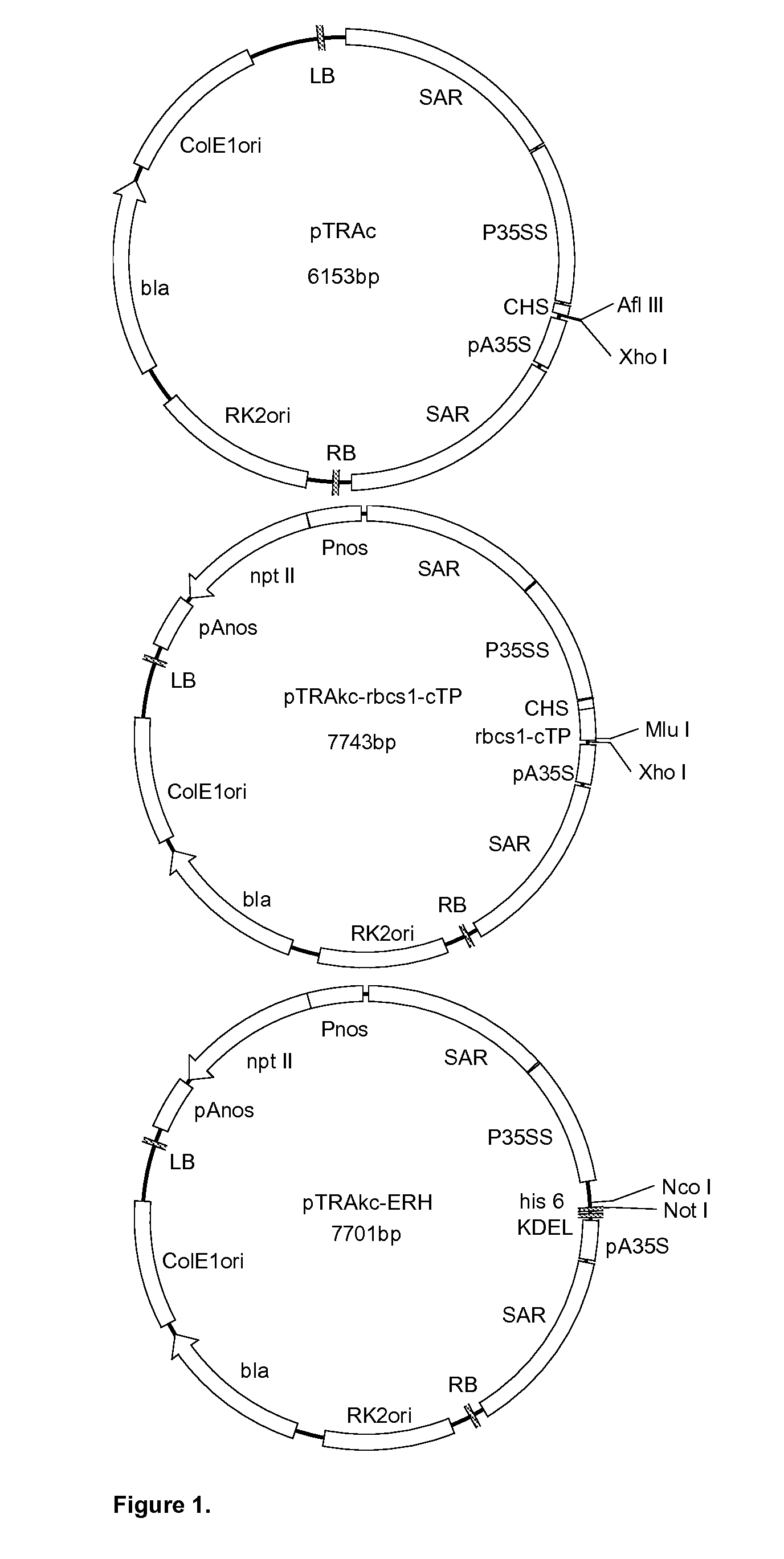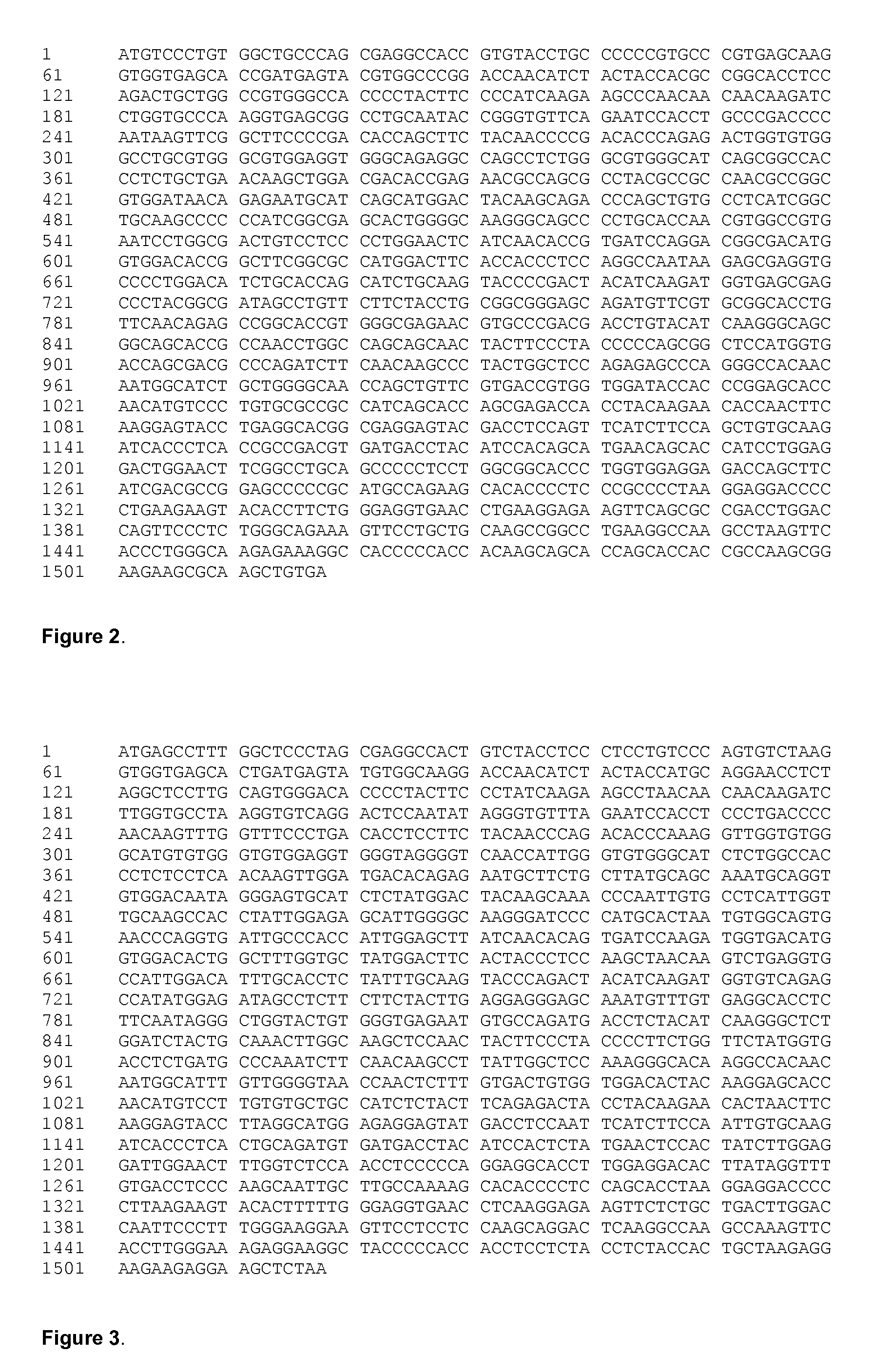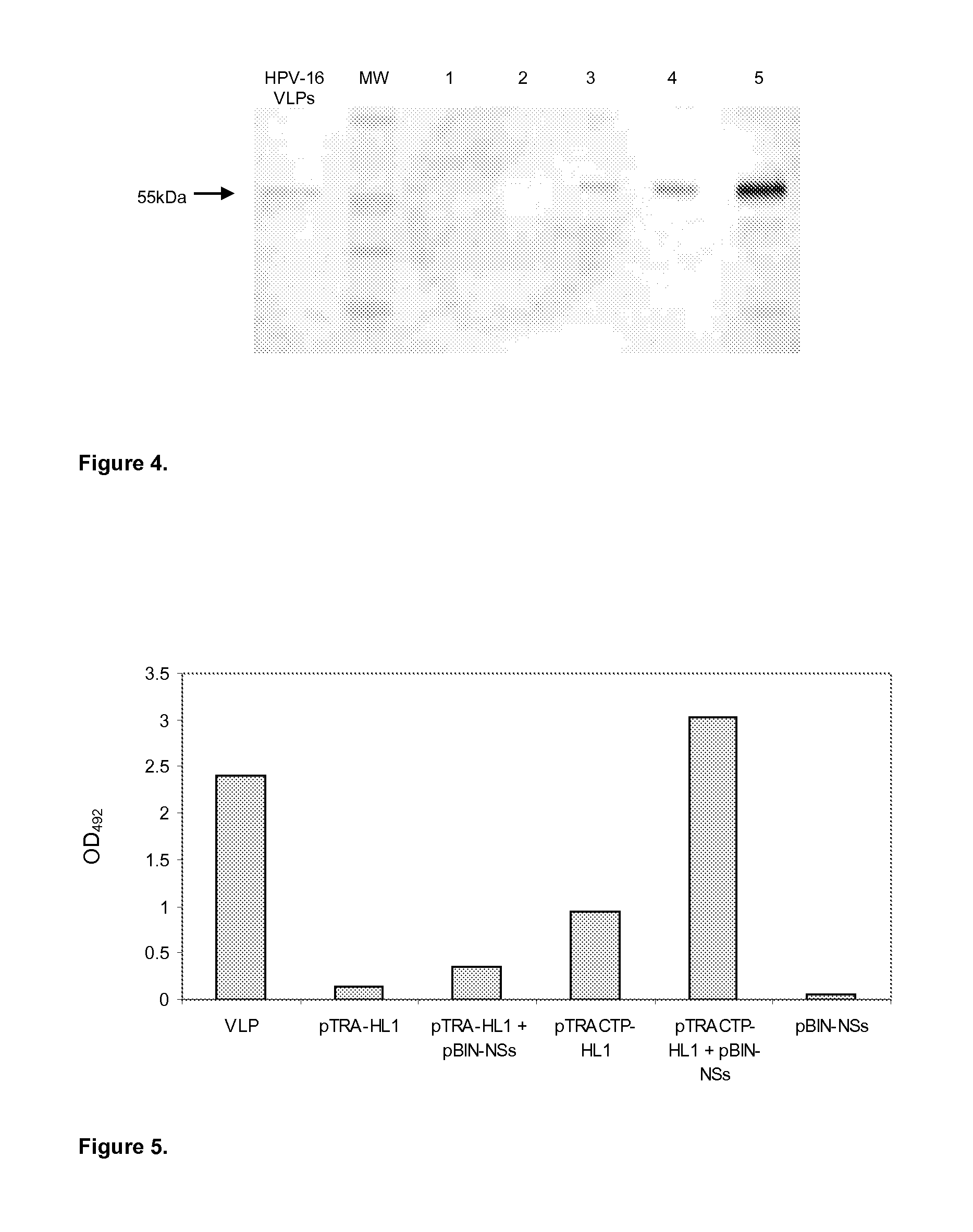Expression of Proteins in Plants
a technology of plant protein and plant protein, which is applied in the field of plant protein expression, can solve the problems of inability to generate transgenic plants to investigate the expression characteristics of a large assortment of proteins and/or expression vectors, and the overall low level of heterologous protein produced
- Summary
- Abstract
- Description
- Claims
- Application Information
AI Technical Summary
Benefits of technology
Problems solved by technology
Method used
Image
Examples
example 1
Expression of HPV L1 Protein to High Levels
Expression Constructs
[0047]Three Agrobacterium vectors: pTRAc, pTRAkc-rbcs1-cTP and pTRAkc-ERH (FIG. 1) were obtained from Rainer Fischer (Fraunhofer Institute, Aachen, Germany). The pTRAc vector consists of a Cauliflower Mosaic Virus (CaMV) 35S promoter (P35SS), with duplicated transcriptional enhancer, chalcone synthase 5′ untranslated region (CHS) and CaMV 35S polyadenylation signal (pA35S), for foreign gene expression; 2 scaffold attachment regions (SAR) for the tobacco RB7 gene; the left and right borders for T-DNA integration; origins of replication for E. coli and Agrobacterium tumefaciens; and the bla gene for antibiotic selection. pTRAkc-rbcs1-cTP is a derivative of pTRAc with an additional rbcs-cTP sequence (chloroplast targeting signal from the small subunit of Rubisco from Solanum), forming a 3′ fusion with the foreign gene. pTRAkc-ERH is also derivative of pTRAc, and includes the KDEL and his6 sequences, forming a 5′ fusion wit...
example 2
H5 HA Protein of Influenza Virus Expressed to High Levels
Plasmid Construction
[0073]The full-length gene HA gene (H5, 1704 bp, FIG. 10) of the Influenza A / Viet Nam / 1194 / 2004 (H5N1) virus (GenBank accession no. AY651333) and a 23 amino acid-truncated HA gene (H5tr, 1635 bp, FIG. 11) were human codon optimised, and synthesised by Geneart (Germany). H5tr was truncated from nucleotide 1597-1665 to remove its membrane anchoring domain (FIG. 12): this should prevent the HA protein from being associated with cell membranes, and should allow the H5tr protein to be secreted from plant cells after appropriate processing in the ER, which may greatly assist its purification. Enzyme recognition sequences were added during the gene synthesis to facilitate cloning.
[0074]The H5 and H5tr genes were each cloned into the three A. tumefaciens vectors, in Example 1. The H5 and H5tr genes were digested with Nco I and Xba I and cloned into the Afl III and Xba I sites of pTRAc, forming the clones pTRA-H5 an...
example 3
Plasmid Construction
[0081]Agrobacterium vectors pTRAc, pTRAkc-ERH,pTRAkc-A, and pTRAkc-rbcs1-cTP (FIG. 14) were supplied by Rainer Fischer (Fraunhofer Institute for Molecular Biology and Applied Ecology IME, Aachen, Germany). Restriction enzyme sites were included at either end of the L2 ORF by polymerase chain reaction (PCR), to facilitate directional cloning into the three Agrobacterium vectors. The wild type HPV-16 L2 1.4 kb open reading frame (ORF) (saL2), the HPV-16 L2 ORF codon optimized for expression in plants (plantised) and the codon optimized HPV-16 L2 ORF for mammalian expression (humanised) were amplified by PCR. Codon optimization for Nicotiana of HPV-16 L2 (pL2) was done by GENEART® (Regensberg, Germany). The humanised HPV-16 L2 (hL2) was supplied by Martin Müller (Germany).
[0082]The pTRA vectors hold a number of characteristics that optimize the expression of the foreign gene. pTRAc contains the skeleton features and is proficient at transgene expression in the cytop...
PUM
| Property | Measurement | Unit |
|---|---|---|
| pH | aaaaa | aaaaa |
| pH | aaaaa | aaaaa |
| temperature | aaaaa | aaaaa |
Abstract
Description
Claims
Application Information
 Login to View More
Login to View More - R&D
- Intellectual Property
- Life Sciences
- Materials
- Tech Scout
- Unparalleled Data Quality
- Higher Quality Content
- 60% Fewer Hallucinations
Browse by: Latest US Patents, China's latest patents, Technical Efficacy Thesaurus, Application Domain, Technology Topic, Popular Technical Reports.
© 2025 PatSnap. All rights reserved.Legal|Privacy policy|Modern Slavery Act Transparency Statement|Sitemap|About US| Contact US: help@patsnap.com



